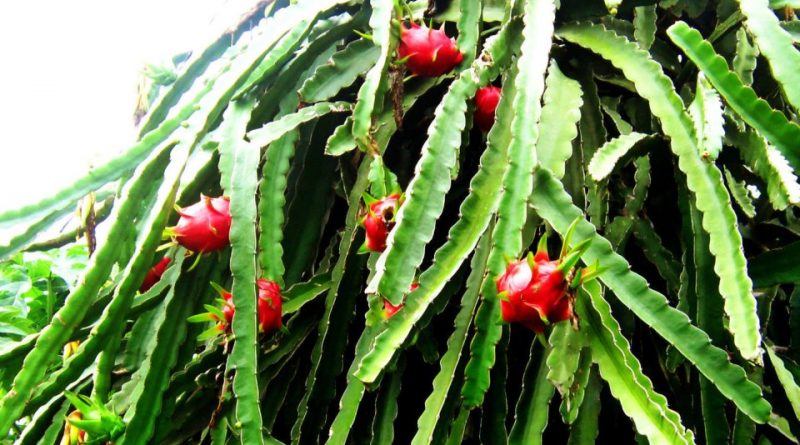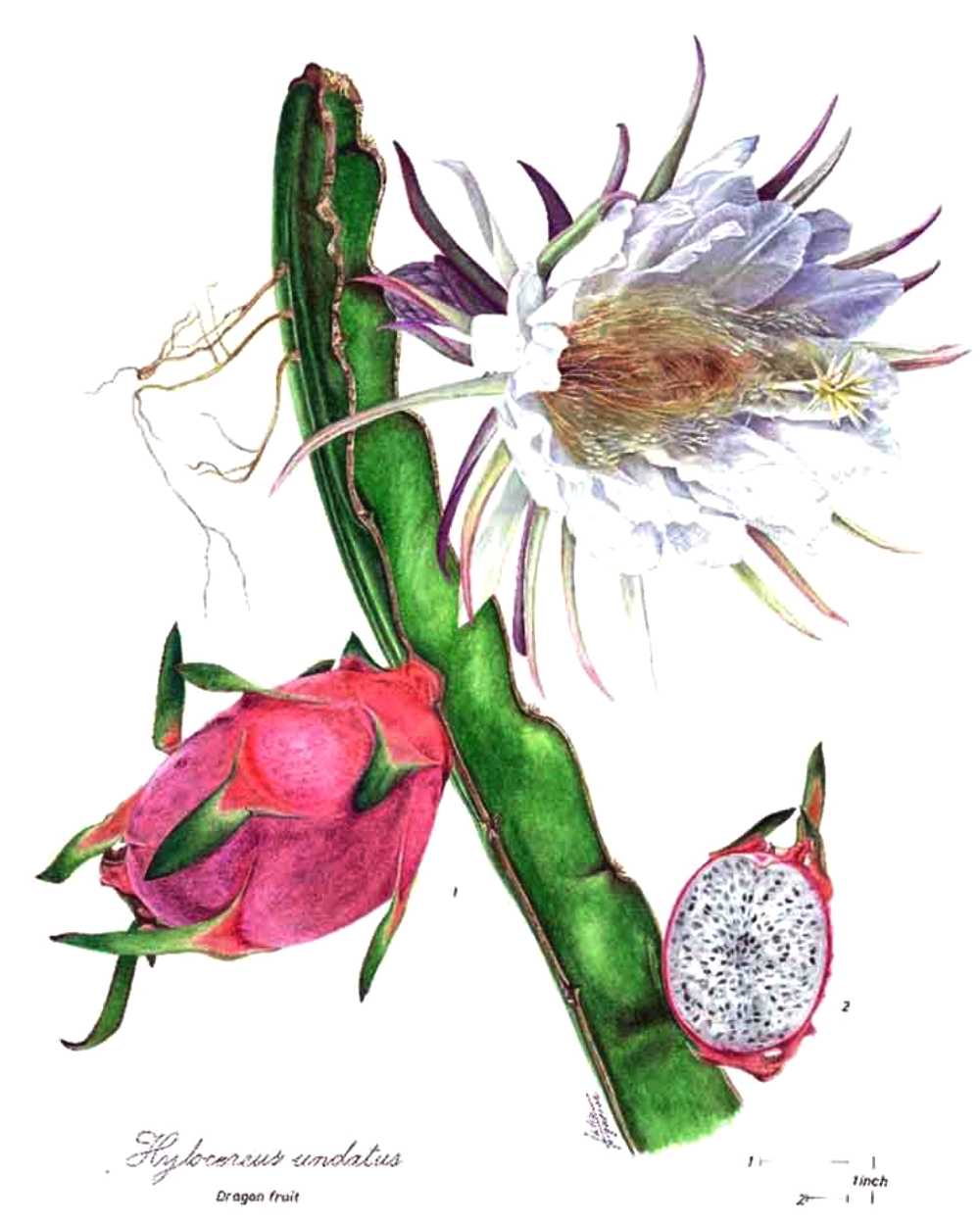Hylocereus undatus
Hylocereus undatus
Strawberry Pear (Hylocereus undatus (Haworth) Britton & Rose) is a succulent species belonging to the Cactaceae family.
Systematics –
From the systematic point of view it belongs to the Eukaryota Domain, United Plantae, Magnoliophyta Division, Magnoliopsida Class, Caryophyllales Order, Cactaceae Family and therefore to the Genus Hylocereus and to the H. undatus Species.
Etymology –
The term Hylocereus comes from the Greek ΰλη hyle forest, wood and from Cereus, taper: for the columnar form of many species of this genus: forest cactus. The specific epithet undatus derives from únda onda: wavy, generally referred to the edge of the leaves.
Geographical Distribution and Habitat –
Hylocereus undatus is a plant native to the arid neotropical areas (Mexico, Guatemala, Costa Rica), subsequently introduced in Central America and other areas of the world.
It is also cultivated in eastern and southern Asian countries such as Cambodia, Thailand, Taiwan, Malaysia, Vietnam, Sri Lanka, the Philippines, New Guinea, Indonesia and Bangladesh, and is also found in Okinawa, Hawaii, Israel, Northern Australia, Southern China and Cyprus.
This plant is also cultivated for ornamental purposes even in areas unsuitable for commercial fruiting, such as in the Mediterranean area.
Description –
Strawberry Pear is a cactus with long “branches” of 6-12 meters, creeping or hanging, about 10-12 cm thick with three ribs.
The areolas, which carry thorns in cacti, are about 2 mm wide. The spines on the adult branches are 1-4 mm long, acicular to almost conical in shape and grayish to black in color.
This plant has aerial roots with which it is able to attach itself to trees (epiphytic plant) or to rocks (litopite plant).
The flowers are greenish white, about 25-30 cm long and with a diameter that varies between 15 and 20 cm and with 5-10 cm long stamens; these flowers give off a strong “vanilla” scent.
The flowering period lasts for a fairly long time and that of a single flower, which occurs at night (while it closes during the day), lasts about 2 days and takes place at night. The plant is self-sterile, meaning it cannot fertilize itself as it is self-pollinated.
The fruit is 5 to 12 cm long with a diameter of 4-9 cm, with a color ranging from deep pink to red, with large greenish bracts.
The flesh inside the fruit, of soft consistency and with a sweet and delicate taste, is pleasantly scented, and generally white or red with very many and very small seeds of black color, edible.
Cultivation –
Strawberry Pear is a plant that must be grown in sunny areas, with water supplies that must be regular during the summer to have a continuous production, even if it is very resistant to dryness. Although it is a plant that resists relatively low temperatures, prolonged cold can seriously damage the plant.
In full production, red Pitahaya plants can have up to 4-6 fruiting cycles per year.
Uses and Traditions –
The Hylocereus undatus that produces the so-called dragon fruit is a plant that produces a nectar that to attract pollinators.
The plant, as well as for production purposes, is also cultivated for ornamental purposes only and due to its nocturnal flowering this plant is also called the queen of the night.
The fruit of the red Pitahaya is rich in mineral salts, but with a very low calorie content: 100 g is only 36 Kcalories.
Preparation Mode –
The white or red flesh of the dragon fruit is pleasant and soft, with a sweet and delicate taste enriched by a slight aromatic aftertaste. It is consumed like a cup of ice cream with the aid of a teaspoon, natural or with lime and sugar. The fruits are also used to prepare a juicy drink (agua de pitaya) and in pastry. It keeps for about ten days at room temperature.
Guido Bissanti
Sources
– Acta Plantarum – Flora of Italian Regions – Wikipedia, the free encyclopedia – Treben M., 2000. Health from the Pharmacy of the Lord, Advice and experiences with medicinal herbs, Ennsthaler Publisher – Pignatti S., 1982. Flora d ‘Italy, Edagricole, Bologna. – Conti F., Abbate G., Alessandrini A., Blasi C. (edited by), 2005. An annotated checklist of the Italian vascular flora, Palombi Editore.
Attention: Pharmaceutical applications and food uses are indicated for informational purposes only, do not in any way represent a medical prescription; therefore no responsibility is assumed for their use for curative, aesthetic or food purposes.


